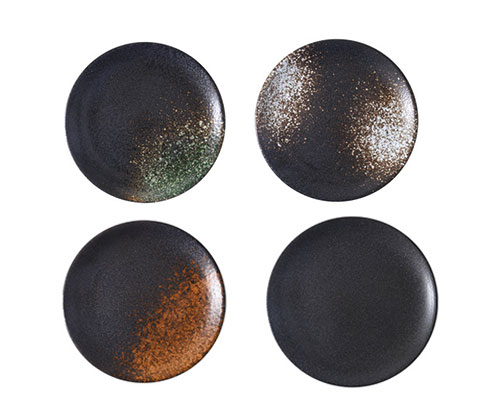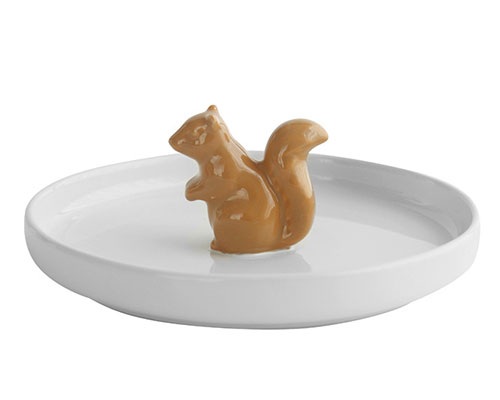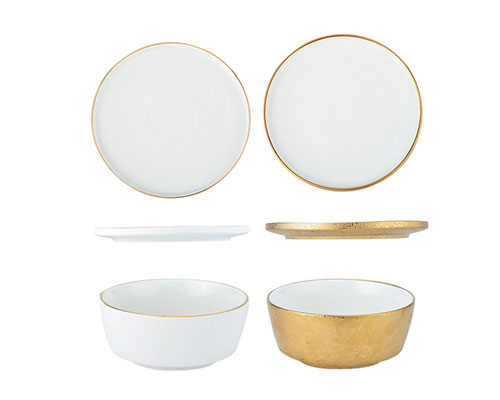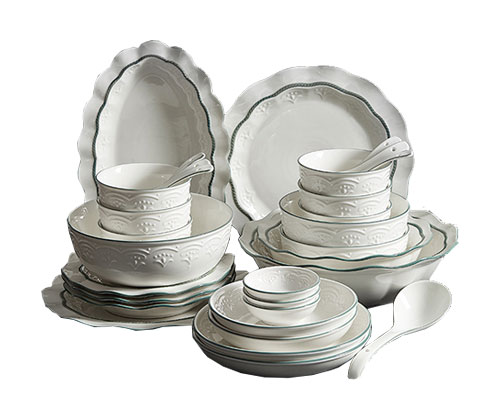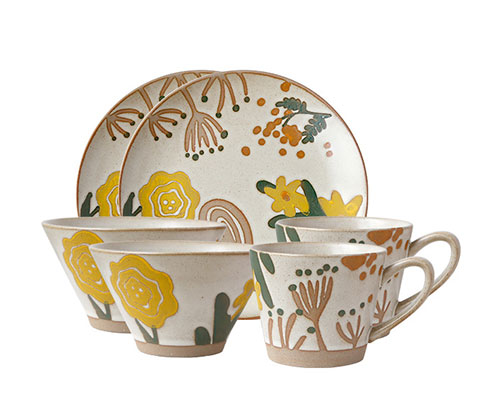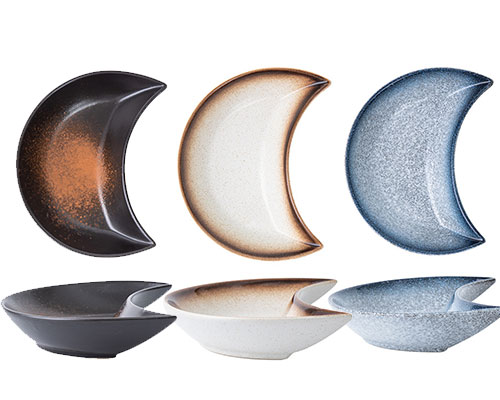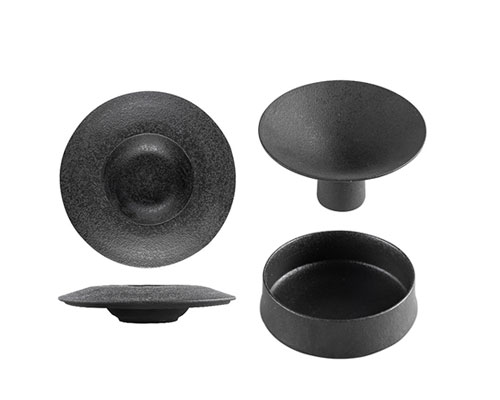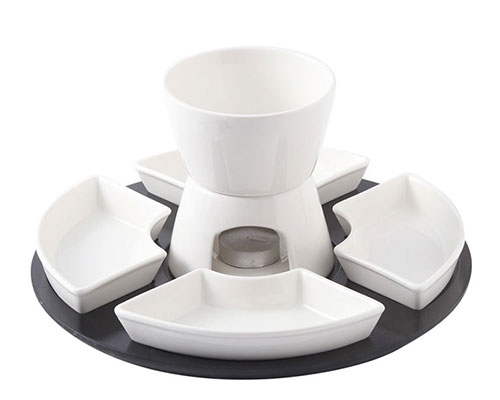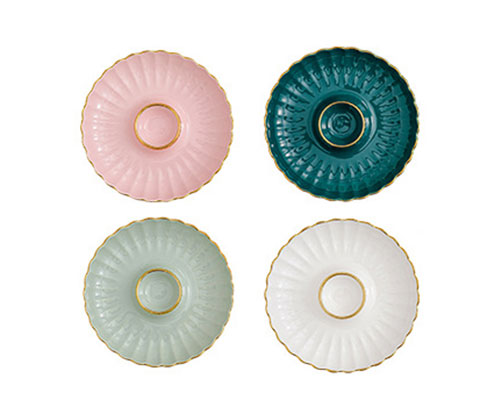Ceramic tableware is made of thick, high-quality, lead-free pottery. Using carefully selected porcelain tableware can make the simple dining process more delicate and warm. Ceramic tableware is also called Ceramic Dinnerware, Ceramic Crockery, or Ceramic Dishware.
Ceramic Tableware mainly includes cutlery, glasses, plates, bowls, mugs, and all kitchen items used for cooking, serving food and decorating the table. Ceramic Plates And Bowls, from the roughest earthenware to the finest fine ceramics and porcelain. Its main raw materials are silicate minerals, such as clay, feldspar, quartz, etc.
Ceramic Tableware Set Features
- Modern Ceramic Dinnerware is fired at a high temperature of 1300°. It is not only sturdy but also rich in texture.
- The smooth glaze on the porcelain surface can prevent the tableware from getting moldy and rusting.
- Best Ceramic Dinnerware Sets can be drawn in different styles according to different decorations.
- Colorful Ceramic Tableware Sets can also create different dining atmospheres according to different styles and colors.
- The Cute Ceramic Bowl is not only practical but also has many exquisite designs on the shape of the tableware.
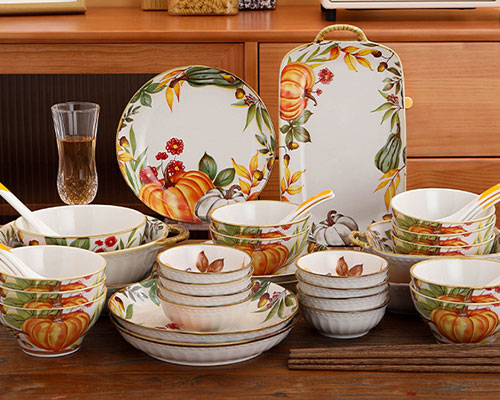
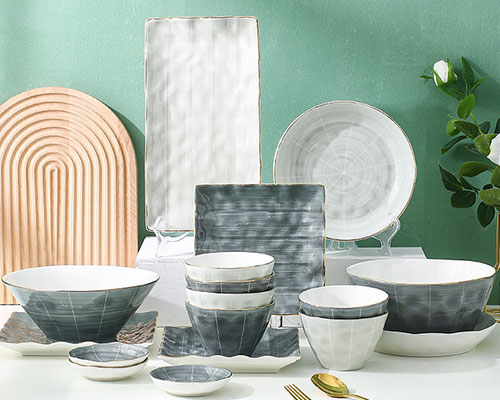
Ceramic Dinnerwares Manufacturer
Ceramic Dinnerware has a long history in my country. TYZ Ceramics Factory lives in Chaozhou City. The shapes of ceramic dishware are diverse, colorful, cool and smooth to the touch, easy to wash, and deeply loved by people.
Taking into account safety, practicality, and aesthetics, as well as the difficulty of hygienic cleaning, Ceramic Crockery is definitely one of the first choices among many tableware.
Ceramic Dinnerware Production Methods
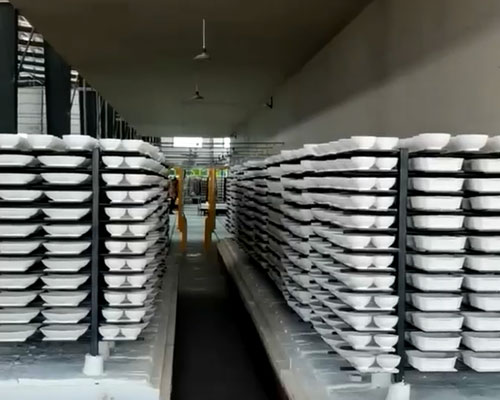
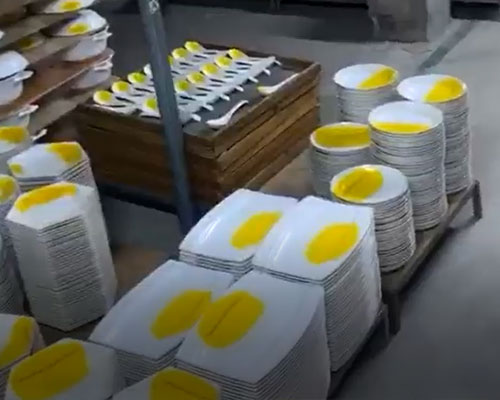
The production methods of ceramic dishware are divided into three types: on-glaze color, under-glaze color, and in-glaze color.
On-glaze ceramics are made of pigments and pasted on the glaze, or directly painted with pigments on the surface of the product. It is then roasted at low temperature. Because the firing temperature does not reach the level of melting of the glaze layer, the flower surface cannot sink into the glaze. When you touch the glazed ceramics with your hands, you can feel that the flower surface has an obvious concave and convex feeling.
In-glaze ceramics are fired at temperatures that melt the glaze. Pigments can sink into the glaze, which is then covered by the glaze after cooling. The glaze-colored ceramic crockery has a smooth surface and no obvious bumps to the touch.
All the underglaze ceramics are decorated on the porcelain blank. After glazing, it is fired at a high temperature. The flower surface is covered with a glaze layer, which looks bright, flat, and feels smooth.


